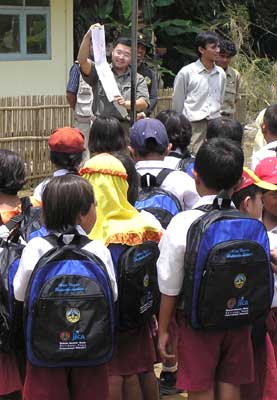
| ENGLISH |  |
BAHASA INDONESIA |  |
日本語 |
|
Gunung Halimun-Salak National Park Management Project (GHSNP-MP)
Period: Place: Outline: Under this situation, the Japanese and U.S. governments announced in 1992, “The Japan and U.S. global partnership action plan,” in which the two countries promised to work jointly to manage and conserve natural resources in developing countries in a Japan and U.S. environmental joint cooperation project and Indonesia was chosen for the action plan. Then, the Indonesian government requested the Japanese government for project method technical cooperation and grant aid for the sake of conserving its biodiversity in a way appropriate for the country. Based on this request, grant aid that are “Indonesian biodiversity conservation plan” (BCP) (phase I: 1995 to 1998, phase II: 1998 to 2003, 8 years in all) was provided to improve facilities and similar items useful for conservation of biodiversity. This project was aimed at further enriching the technology of park management and biodiversity conservation which have been obtained through cooperation efforts thus far, establishing the park management method using the Gunung Halimun Salak National Park as a model and spreading the technology fostered there to other national parks through workshops and trainings.
|


 Return Top
Return Top